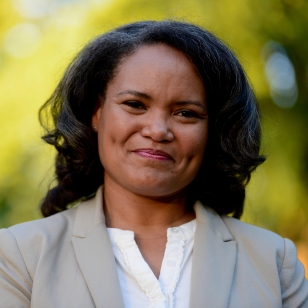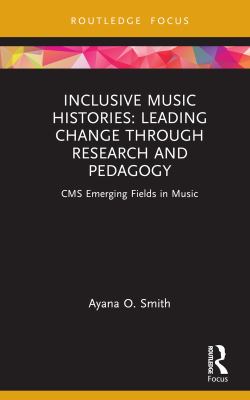History is messy, ranging across diverse perspectives and experiences. One of the central features of conservatory training doesn’t always make room for this diversity: the canon.
Ayana Smith, associate professor and chair of the Jacobs Musicology Department, is out to change this. Her latest book, Inclusive Music Histories: Leading Change Through Research and Pedagogy (Routledge, 2023), is part of a series challenging educators to reimagine how they prepare their students as twenty-first century musicians.
She encourages instructors to reflect on why they teach certain repertories and what shadow histories hide behind established “facts.” “What I tried to do in the book was give people small things they could do over varying lengths of time,” she says. “But if we incorporate one or two or three strategies over time, we can have significant change.”
Smith’s key idea is that instructors don’t have to stop teaching canonic repertoire, but if they provide lesser-known examples to create a counterpoint to established narratives, those narratives will become more nuanced, vibrant, and historically accurate. She’s noticed many instructors feel like they must give up teaching familiar content to make room for diversity in their curriculum. But she asserts it doesn’t have to be this way. “Diversity is not anathema to tradition; diversity is part of tradition; we just have been taught not to recognize it.”
Smith suggests that to effectively combine traditional material with new content, each topic (person, piece of music, event, etc.) should include at least three historical connections to other topics. This gives students “layered pathways” for understanding how historical persons, events, ideas, or things relate to each other across time, while avoiding tokenism.
Beyond the music history classroom, Smith is confident her strategies can impact music performance. “My hope is that since I’m working in a conservatory-based setting, more performance students will have access to these ideas. When they become studio instructors and performers, they’ll bring these ideas to a wider audience in some form or another.”
There’s a feedback loop between canon formation and performance, she says, that can be directly changed by how students are taught to think about music and its larger cultural contexts. “Thinking about how we select repertoire can help us identify the mechanisms that cause us to stay within our boundaries. Being able to recognize when we’re doing that and having strategies for moving outside those boundaries can work in any musical scenario.”



